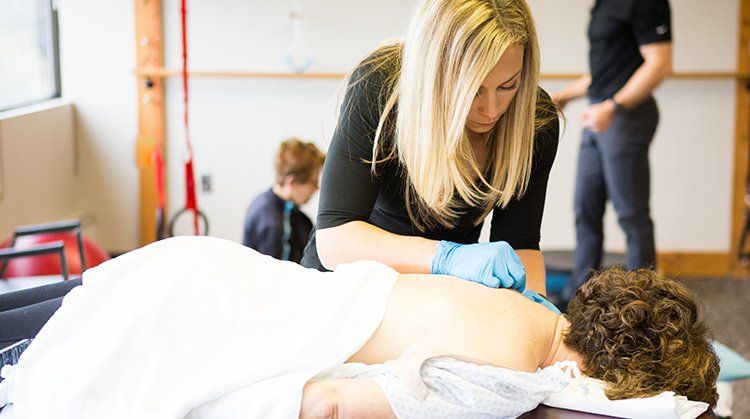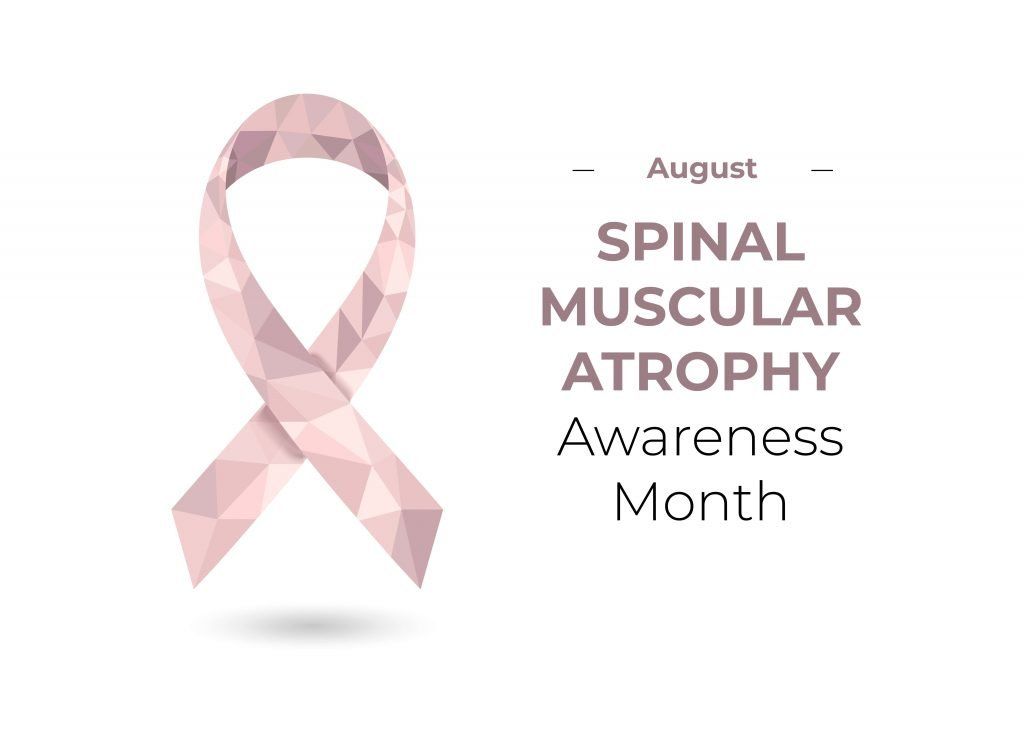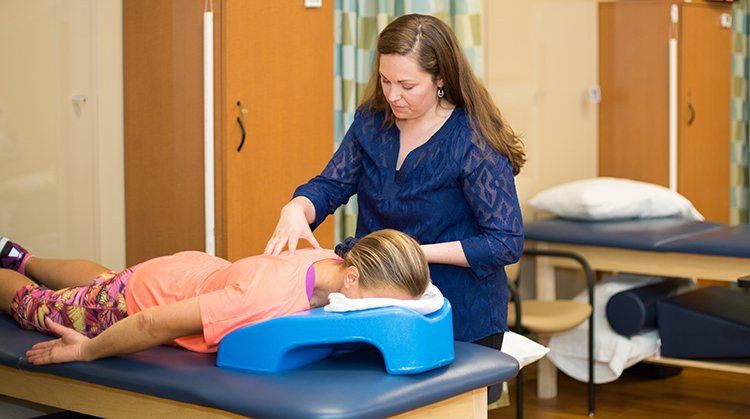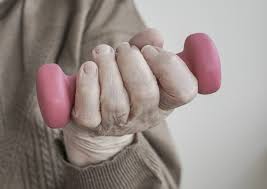Physical Therapist's Guide to Parkinson Disease
Parkinson disease (PD) is the second most common degenerative brain disorder affecting adults. (Alzheimer disease is the most common.) People of all ethnic groups can develop PD, but it occurs less among African American and Asian populations. Parkinson disease was first defined as only a “motor” (movement) disease, but research has shown that it also causes “nonmotor” symptoms (such as lightheadedness when standing up) in other systems of the body. People with PD are at risk of falling and sustaining other injuries due to their movement and balance challenges. Treatment includes a combination of medication and physical therapy—and in some cases surgery. Physical therapists partner with people with PD and their families to manage their symptoms, maintain their fitness levels, and help them stay as active as possible.
What is Parkinson's Disease?
Parkinson disease is related to a loss of nerve cells in the brain that produce a chemical called dopamine. Dopamine and other brain chemicals are normally in balance and are important for the control of body movements, thought processes, decision making, moods, and other behaviors.
The exact cause of PD is not yet known. Family history, aging, or exposure to certain environmental toxins may contribute to the onset of PD. It is a chronic degenerative disease, which means that it gets worse over time; however, people usually do not die from it.
The severity and symptoms of PD can vary widely. Some people have the disease for 20 to 30 years and experience a slower decline in mobility and thinking over a longer period of time. Others may experience difficulty with physical movements and thought processes within 5 to 10 years, as the disease progresses more rapidly.
Signs and Symptoms
Nonmotor symptoms of PD, such as a decreased sense of smell, sleep problems, and lightheadedness when first standing up, can begin many years before motor (movement) symptoms develop. Motor symptoms of PD, which typically include muscle and joint stiffness (rigidity), shaking (tremors) in the hands and limbs, slowed movement, and balance problems, most often begin at or around age 60. However, early-onset PD can affect people at a younger age.
The motor symptoms of PD can be very mild at first. A common early symptom is a tremor in 1 hand, most often when you are at rest. It might look like you are rolling a pill between your thumb and forefinger. Tremors also can occur in your legs or jaw when you are at rest. Since the tremors are most apparent during rest, they usually go away when moving and typically don't interfere substantially with daily functions.
As the condition progresses, people with PD may notice other motor symptoms, such as:
- Movements that become smaller, possibly resulting in:
- shuffling when walking
- the arms swinging less when walking
- the voice becoming quieter
- Muscle stiffness or rigidity, causing discomfort in the neck, trunk, or shoulders
- Pain due to muscle stiffness
- Postural instability, resulting in poor balance and a greater risk of falling
- Movements that become slower during daily activities such as dressing, showering, or moving in bed
- A feeling of the feet being "frozen" to the floor, making it hard to take a first step, or to turn around when walking
- Stooped posture
- Difficulty speaking at a normal voice level
- Difficulty swallowing
- Difficulty performing tasks that were once easy to do, such as gardening or swinging a tennis racquet or golf club
- Difficulty making facial expressions
- Difficulty holding and releasing urine (bladder urgency and incontinence)
Nonmotor symptoms might include:
- Difficulty paying attention to a task for a long period of time or dividing attention between 2 or more tasks
- Fatigue
- Lack of motivation
- Lightheadedness
- Depression
- Anxiety
- Disturbed sleep
How Is It Diagnosed?
Because there is not one definitive test for PD, it can be difficult to diagnose. A diagnosis is usually made based on a person’s medical history and a neurological examination. If your physical therapist suspects that you have symptoms of PD, you may be referred to a neurologist for further examination.
A diagnosis of PD may be made if a person is found to have:
- Slowing of motion and
- Tremor when resting, or muscle rigidity
- A significant improvement in symptoms when taking a medication to treat PD
- Initial symptoms on 1 side of the body only
How Can a Physical Therapist Help?
Because PD affects each person differently, your physical therapist will partner with you to manage your specific situation—now and as your condition changes. You are not alone!
Following a diagnosis of PD, your physical therapist will conduct a comprehensive evaluation, including tests to examine your posture, strength, flexibility, walking, endurance, balance, coordination, and attention with movement. Based on your test results, your physical therapist will develop an individualized treatment plan to help you stay as active and as independent as possible. Your program will include exercises and techniques to combat the symptoms of PD.
Depending on the nature and severity of your condition, your treatment program may focus on activities and education to help you:
- Improve your fitness level, strength, and flexibility
- Develop more effective strategies to get in and out of bed, chairs, and cars
- Turn over in bed more easily
- Stand and turn to change directions more efficiently
- Improve the smoothness and coordination of your walking
- Improve your ability to perform hand movements
- Decrease your risk of falling
- Improve your ability to climb and descend stairs and curbs
- Perform more than 1 task at a time more efficiently
- Participate in activities that are important to you
Some of the medications designed to manage PD symptoms may have an immediate positive effect. For example, movement is typically much easier shortly after you begin taking certain PD medications. Your physical therapist will know how to time treatments, exercise, and activity based on both the schedule and the effects of your medications to get the best results.
Parkinson’s disease can make daily activities seem frustrating and time-consuming. Your physical therapist will become a partner with you and your family to help you combat and manage the symptoms of PD. As your condition changes, your treatment program will be adjusted to help you be as independent and as active as possible.
Some people with PD benefit from using a cane or a walker. Your physical therapist can work with you to determine if any of these devices may be helpful to you. If you need physical assistance to help you with moving in bed or getting out of a chair, your physical therapist can team with you and your family to develop strategies to make moving easier and help prevent injury. In addition, your physical therapist can make suggestions on changes to your home environment to optimize safe and efficient daily function at home.
Can this Injury or Condition be Prevented?
To date, there is no known way to prevent PD. Studies have shown improved walking, balance, strength, flexibility, and fitness in people with PD, who participate in a regular exercise program. However, these studies also indicate that people with PD gradually lose the gains they make when their supervised exercise program ends. It’s important to work with your physical therapist to help develop good long-term exercise habits.
Real Life Experiences
Bob is a 58-year-old store manager who was diagnosed with PD 6 months ago. Bob works full-time and does not currently exercise. His physician has recommended a course of physical therapy treatments. Bob has heard that exercise may be helpful for people with PD, but he doesn’t know which exercises are best for him and how much he should exercise. He calls a local physical therapy clinic for help.
At his first visit to the clinic, Bob reports slowness with walking, a tendency to drag his left leg, and a limited ability to swing his left arm when he’s walking. He notes that his neurologist has prescribed a drug for him that helps relieve tremors early in the course of the disease.
Bob's physical therapist conducts a full physical examination that includes an evaluation of his balance, and his ability to walk, turn, and rise from a chair. She tests his strength, flexibility, and cardiovascular (heart) responses to exercise. She also administers standardized tests that measure Bob’s quality of life, and his walking, balance, and neurological signs, to determine Bob's baseline status and to help set his treatment goals.
Bob’s physical therapist develops an individualized exercise program to help him improve his walking and prevent the onset of weakness and deconditioning. She teaches him specific exercises to help increase his strength and flexibility. She recommends that Bob start a brisk walking program using a metronome for 30 minutes, 3 times per week. A metronome is a device that produces regular “clicks.” Bob walks to the "beat" of the metronome, resulting in faster walking with less leg dragging and better arm swings.
Bob’s physical therapist also recommends he join a fitness center or other community exercise class. Once Bob chooses a facility and a program, she meets with the fitness staff to instruct them about Bob’s particular exercising needs related to his PD.
After 1 month of exercising, Bob's walking is faster, his leg is dragging less, and his arm is swinging better. Bob is carrying out his exercise program successfully. He thinks the exercises are helping, and he is more confident in his ability to exercise on a regular basis.
Bob agrees to consult with his physical therapist every 6 months to monitor his progress and to adjust his exercises, so he can maintain his highest possible levels of fitness and activity.
This story was based on a real-life case. Your case may be different. Your physical therapist will tailor a treatment program to your specific case.










